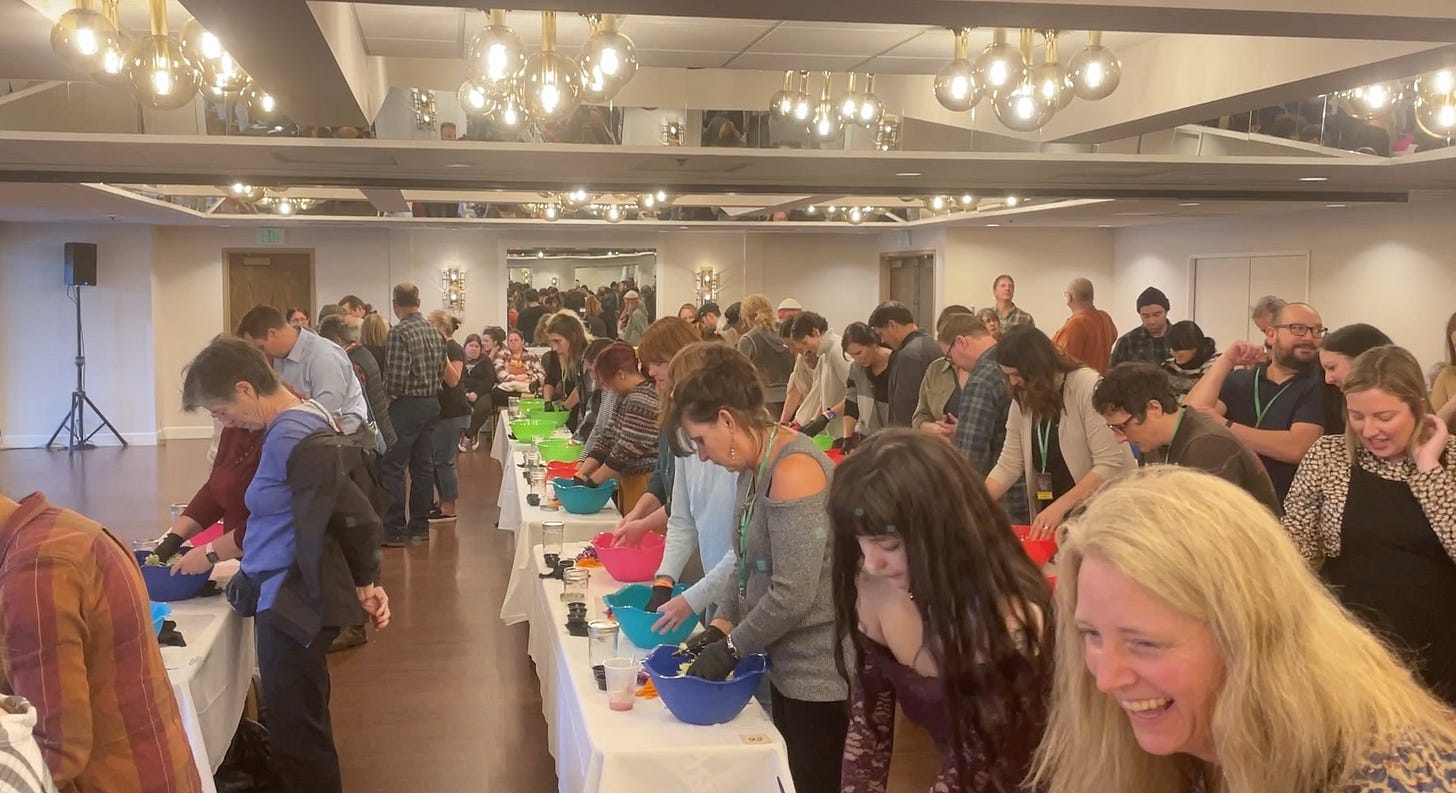B is for Beavers, Broccoli, and Beets
Where we don't ferment beavers or broccoli but we do ferment beets. Beet fermentation tips and beet kvass recipe.
Christopher’s mistake this past weekend, on the day we were on our way to a local fermentation festival (more on that in a bit), was letting me do morning chores. This is where I admit that for most of this past week, I have somewhat obsessively watched the water levels in our small gully plug ponds that are filled by the (now runoff) streams from the forest above us. First watching the two (near empty) ponds fill over the course of the week and then rejoicing as the long-dry spillover culverts at the top began to flow moving the water into the larger (now seasonal) creek that transects the valley below us. In November, our gravity-fed spring stopped flowing. It was not unexpected as every water source has gone dry or near dry in the last years, yet it was still a blow. It brought on the grief of loss, not our own loss of amazing water (though that is hard), but the greater loss of knowing that whatever underground water that seeped out is no longer healthy enough to flow. This affects countless trees and all the animals that live in its moisture or come to quench their thirst in the dry seasons. This isn’t meant to depress you, just backstory to understand this crazy lady that rushes out in the rain to build micro-dams and change the flows of small rivulets and when it is extra wet to change the flow of the entire creek. You would be surprised by how much a well-placed bundle of flimsy dried grasses can change the flow of a lot of water. Hence, Christopher’s mistake. I went outside to feed animals and like a beaver was drawn to the sound of rushing water and wanted to patch my dams. I came in two hours later.
We don’t have any beavers on our property, but we would welcome them as neighbors. These buck-toothed engineers can be important handlers of our watersheds and as a result the carbon cycle. The dams they build slow fresh water down—catching sediment and carbon-rich material and sequestering it in the wetlands that result.
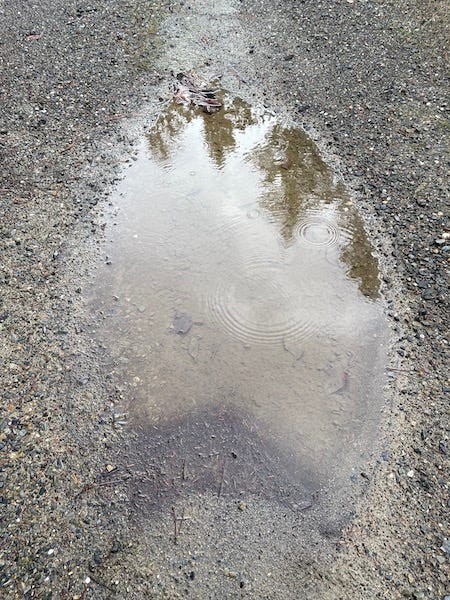
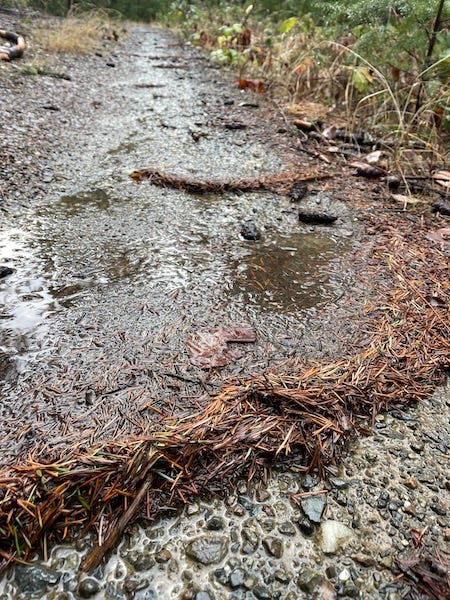
The gulch that holds our spring is narrow and deep carved by extreme erosion on the landscape when the forest was logged 70 years ago. Last year, Christopher and I started building beaver dam analogs. We have cut standing dead trees into lengths and rolled them into ravines. We have stuffed dead grasses, sticks, and mud into the spaces. All this in the hope of slowing the water down and allowing it to slowly soak deep into the earth banking the groundwater. Eventually (way beyond my lifetime and my grandchildren’s if we are being real), as sediment gets caught and these logs break down, the level of the gulley would rise, filling the space. Since we built these structures, we have not had enough rain for even a trickle of flow until this past week. Our spot on the planet was too north to rainfall anywhere near flooding that has been happening just a few hours south of us, but we did get a flow, and the ponds filled for the first time in years. Our little dams, well, weren’t near watertight. I do have to believe they did cause enough of an obstruction to begin this process of banking water. Just two days after any rainfall and the trickle is gone, but I do now know where I need to focus my energy.
We did make it to Brine, Brew and Barrel, the aforementioned festival on time. (I clean up well.) A few hours after tromping around in my rubber boots, I found myself in a room full of beautiful humans saying, “The only rule is not broccoli. Besides that, any vegetable or herb is fair game for delicious fermentation. Remember, the microbes are equal-opportunity carbohydrate eaters–they don’t care if you give them cabbage or escarole. They will do what they do.” This workshop had stations for 50 hands-on participants, yet the room kept filling until there were between 200 and 250 future fermenters in the space. Can I just say, it was exhilarating to see this enthusiasm. Nearly 15 years ago, when I first started taking fermented vegetables out into the public, I have seen the interest continue to grow. In 2014 when our first book Fermented Vegetables, came out, everyone clapped us on the back and said things like, “it's great you hit the fermentation trend.” As I looked out at this room of folx eager to learn how to ferment their own vegetables years later, I have to think the interest in fermented foods has transcended “trend.”
As we talked to people throughout the day, it came up over and over again in conversation that so many folks are new to this and ready to go, and how many folx have tried but still aren’t completely sure or comfortable with the process. Is this you? It got me thinking about you, dear reader, and where you are in your journey. I would love to hear from you. Are you all in with a full counter of experiments? Or are you a fermenter who needs inspiration because you just haven’t done this in a while?
This brings me to today’s fermentation. There are so many wonderful B vegetables, not to mention beans, but I decided we needed to chat about beets.
Why?
Color, fun, and flavor on your table. They are readily available and often fairly inexpensive. The health benefits of beets are tremendous. The striking crimson color is beautiful and also part of what makes beets healthy. Interestingly, Traditional Chinese Medicine sees red foods as blood food—nourishing, building, and keeping it moving. Western medicine, with its scientific analysis, confirms that beets improve blood flow and arterial health while reducing blood pressure. The high folate content and bioflavonoids keep our blood and bodies strong. To these things, add the health benefits of raw probiotic-rich and vitamin-enhanced fermented vegetables, and the result is a real power food. The question really becomes, why not?
I have an answer for that too. Beets can be a pain to ferment (effervescent messiness) or can be off-putting for their funky or earthy flavors. I created this little list that I hope will do two things – inspire you to get back to the basics while giving you some tips for success.
Beet Fermentation Tips
Most winter vegetables contain more sugar; they store these carbohydrates for their big push in the spring. This can make it a little more challenging for fermentation – mostly in the form of extra CO2 and mess, but the extra sugar can turn a lactic acid fermentation more yeasty or even alcoholic. These flavors are what are sometimes described as funky. A little funk can be tasty to some palates and yucky to others. Funk level is a personal thing. Winter beets are especially sugary, even syrupy, our little microbe yeasts buddies can thrive so alcoholic flavors in a beet ferment are very possible.
1. Slice don’t grate. Thinly slice beets on a mandolin rather than grate them into shreds. Less surface area means the fermentation will be slower, more manageable and both less sour and less “funky.” This week’s paid content will have some delicious sliced beet salad recipes.
2. Dilute, Dilute, Dilute. All root veggies that have gone through frosts are particularly high in sugar, this is amplified for beets. Instead of making a pure beet ferment dilute them with other vegetables, like cabbage or celery.
3. Keep it cool. A cool fermenting climate will always give you a little more control of the final flavor. Remember cool temps slow the lactic-acid down so if there is a lot of sugar it means they won’t be able to binge in a heat driven frenzy. This means less wild CO2 action which is easier to control and less likelihood that wild yeast will take over. Cool can be anything between 45°F/7°C to 65°F/18°C.
4. You might need extra salt. In general, we don’t need to add extra salt for cool fermenting conditions, but if your house is extra cozy and warm and your veggies are extra sweet, you may want to add a little more salt. This will help control for yeast dipping into the sugar feast and creating funky or alcoholic flavors.
5. Give your ferment space. This means don’t fill your jar or other vessels to the top. Give it a few inches or more headspace. This will allow all that bubbling “heave” to have the space it needs and not push your brine and ferment out the top.
6. Press it down. Watch these ferments for air pockets, while they start out as CO2 pockets, they can become oxygen pockets under the right conditions. You will also notice when this happens that there is a lot of brine that seems to be developing. If you look closely you will see that it isn’t new brine, it is simply brine that has pooled on top of your ferment. As soon and you press out the air pockets the brine will resume its proper place in your ferment.
7. If you don’t like the earthy flavor peel before fermenting. Some folx just can’t get past the feeling that beets taste like dirt. It’s true we all taste things differently, no judgment. For some of us simply peeling the beet before fermenting is enough to mitigate that flavor. Otherwise, maybe making a kvass with chunks of beet in brine, you get the essence and tonic and less of the beetness. (Recipe below)
8. How long? This is the same for any vegetable. Until it is sour. I usually start checking the smaller batches around five days to seven days. It is preserved and stable at a pH below 4.6.
Today, I included a beet kvass recipe to get you started. This week’s paid newsletter will have two fermented beet salads and more. For those of you on Instagram, my friend @kenjcooks posted a fun beet miso reel yesterday.
Cheers,
Kirsten
PS If you are a paid subscriber (💚🙏) mark your calendar for our first online get-together on Saturday. I will send the link again on Thursday.
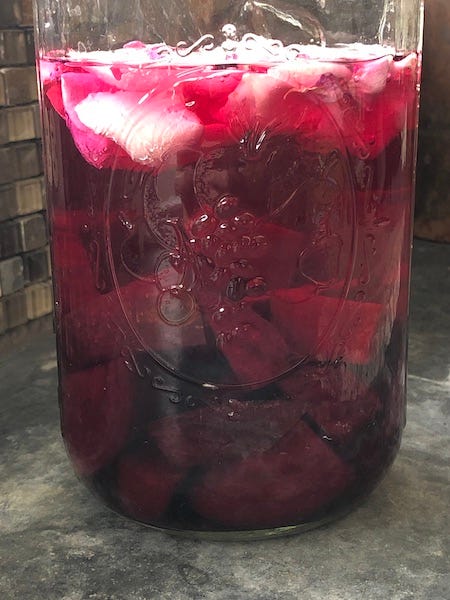
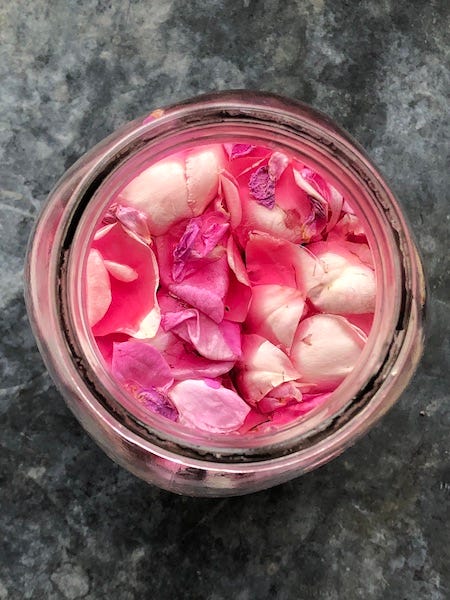
Beet Kvass (Russel)
yield: about 1 quart (946 ml)
Beet kvass is the sour salty liquid that comes from fermenting beet cubes. Depending on the region or ethnicity, this same liquid is also called russel, which is the Yiddish or Slavic word for brine, and brine it is. It’s a fermented, ruby-colored beet “vinegar” used to flavor soups, preserve and color horseradish, and make drinks. This brine has a reputation as a tonic, cleanser, appetite builder, and hangover cure.
The word kvass comes from the old Slavic word meaning “yeast” or “leaven.” It’s a common brew throughout Eastern Europe, usually made by fermenting dark rye bread. In Russia, rassol is cucumber brine, pickle juice touted for the same virtues as kvass, and is the identifying ingredient in rassolnik, a traditional soup made with meat and barley.
Our recipe comes from The Complete American-Jewish Cookbook by Anne London and Bertha Kahn Bishov (1952), a book we found yellow with age. The recipe was simple: 12 pounds (5.4 kg) of beets in water for 3 1/2 weeks. Our recipe isn’t much different — just less time and a bit of salt. Try this as a base for your favorite borscht recipe. The rough chop in this recipe gives the beets enough surface area to ferment without breaking down the sugars too quickly, thus leading to alcohol; don’t grate the beets.
1 1/2 pounds (680 g) (2–3 medium) beets, scrubbed or peeled
1 quart (946 ml) unchlorinated water
2 teaspoons (11.2 g) unrefined salt*
1. Chop the beets into 1/2-inch (1 1/2 cm) pieces, and put them in a 1/2-gallon jar. Add water to fill and mix in the salt. Cover loosely.
2. Set aside on the counter, out of direct sunlight, for 5 to 7 days, stirring daily. You will see some bubbling. For more effervescence, use the burping method.
3. You can start to taste the liquid on day 5. It will have effervescence, like soda; an acidic quality, like lemonade; and a slight saltiness; it will, of course, taste like beets. If you want something more like vinegar, ferment longer, taste again, and repeat until it’s just right. Pour the liquid off the beets into a clean jar. Note: The beets themselves are a by-product of the process; however, they can be used to make a second batch or grated into a salad, or cooked in soup.
4. Store in the refrigerator. This tonic is meant to be made regularly and consumed quickly, none-the-less it will keep, refrigerated, for many months.
* We use Redmond Real Salt. They have offered my fans a 15% off discount with the code ferment.





